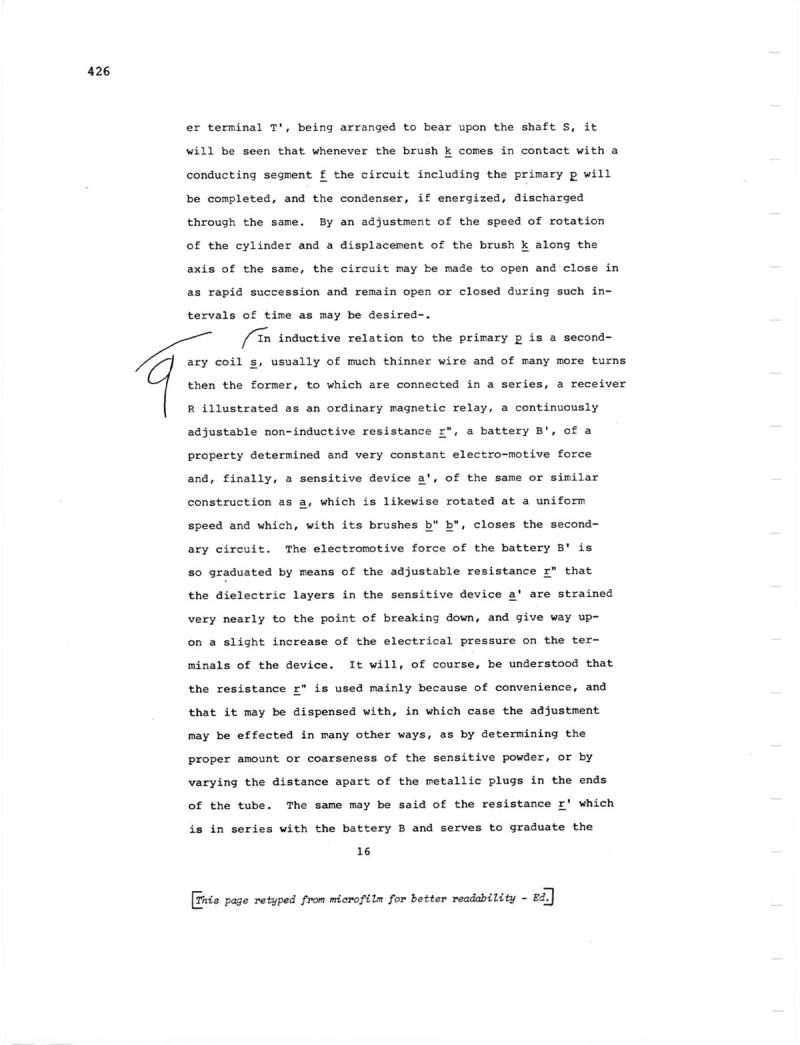
Nikola Tesla Patents
426 er terminal T', being arranged to bear upon the shaft S, it will be seen that whenever the brush k comes in contact with a conducting segment f the circuit including the primary p will be completed, and the condenser, if energized, discharged through the same. By an adjustment of the speed of rotation of the cylinder and a displacement of the brush k along the axis of the same, the circuit may be made to open and close in as rapid succession and remain open or closed during such intervals of time as may be desired-. In inductive relation to the primary p is a secondary coil s, usually of much thinner wire and of many more turns. then the former, to which are connected in a series, a receiver R illustrated as an ordinary magnetic relay, a continuously adjustable non-inductive resistance r", a battery B', of a property determined and very constant electro-motive force and, finally, a sensitive device a', of the same or similar construction as a, which is likewise rotated at a uniform speed and which, with its brushes b" b", closes the secondary circuit. The electromotive force of the battery B' is so graduated by means of the adjustable resistance r" that the dielectric layers in the sensitive device a' are strained very nearly to the point of breaking down, and give way upon a slight increase of the electrical pressure on the terminals of the device. It will, of course, be understood that the resistance r" is used mainly because of convenience, and that it may be dispensed with, in which case the adjustment may be effected in many other ways, as by determining the proper amount or coarseness of the sensitive powder, or by varying the distance apart of the metallic plugs in the ends of the tube. The same may be said of the resistance r' which is in series with the battery B and serves to graduate the 16 This page retyped from microfilm for better readability -
